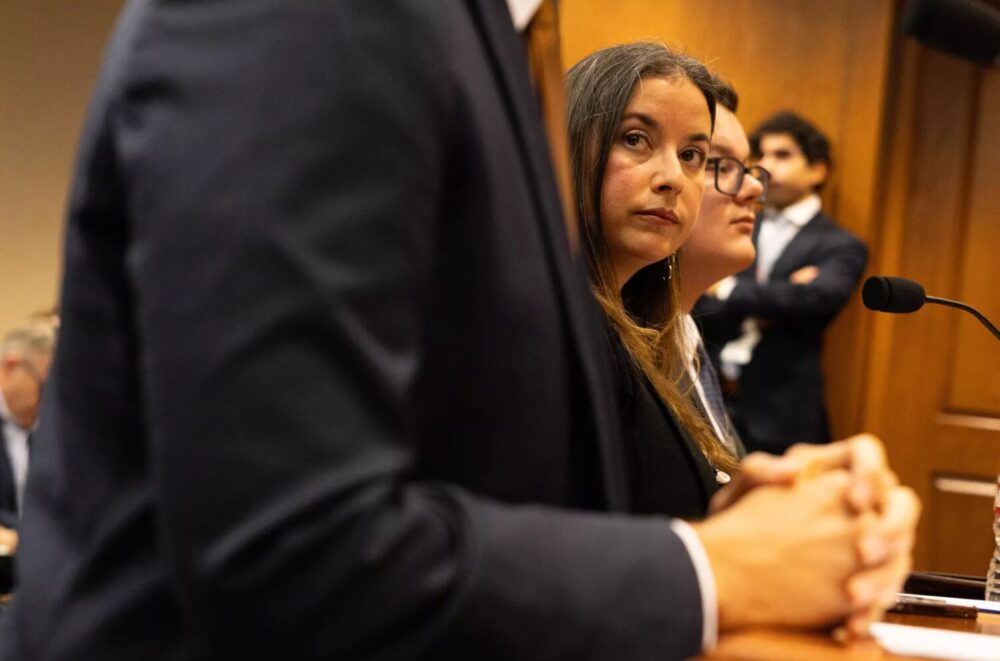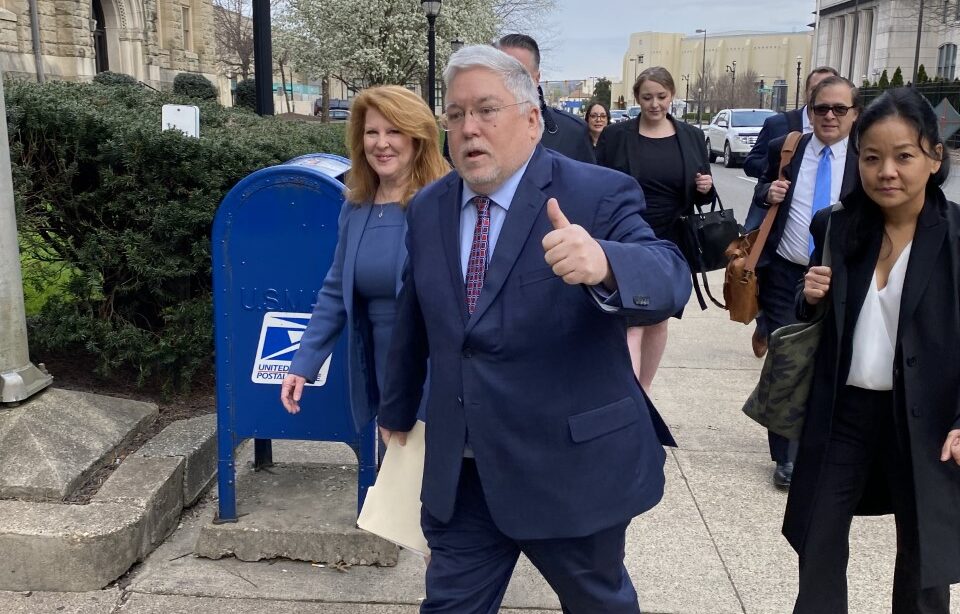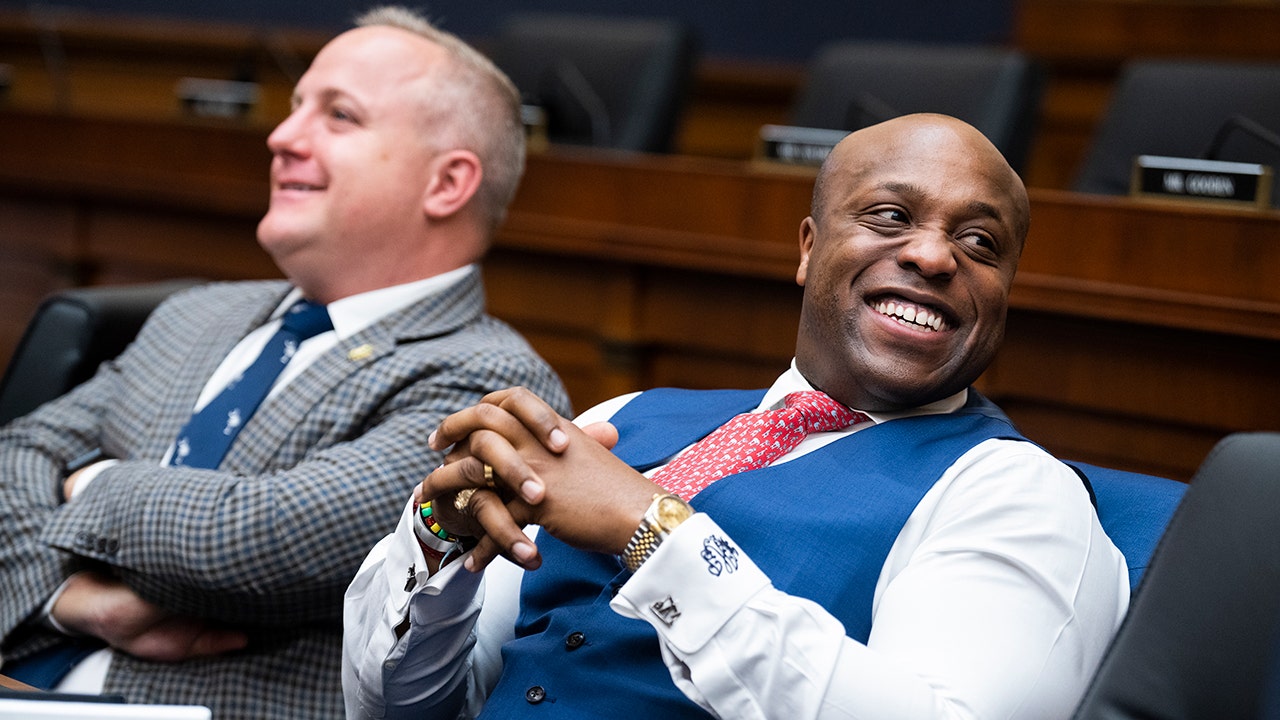Austin, TX
Austin-San Antonio mega-metro tries to avoid water crisis

Jacob’s Well gets its water from the Trinity Aquifer, which is currently at its lowest levels in recorded history.
Photo Courtesy of Katherine Sturdivant
It doesn’t take a natural scientist to understand that in Texas — and in particular, in the corridor between Austin and San Antonio — water is a major issue. Look at the sky and feel no drops. Read the stories about Jacob’s Well or look at an image of Lake Travis. It’s pretty bleak.
Unfortunately, as the region expands, water, or the lack thereo, is only going to become more of a concern. About 5 million people live in the region. That number is supposed to balloon to 6-7 million by 2030, according to The Greater Austin-San Antonio Corridor Council. Over the course of the next 50 years or so, water usage will continue to rise, droughts will persist, and, perhaps most dire of all and for a variety of reasons, we will have less water available to us.
The state and the cities need to figure this all out, lest the San Antonio-Austin mega-metro become Mad Max: Fury Road. Here’s what they’re doing.
Advertisement
Article continues below this ad
Dripstone Ranch Supervisor Farron Sultmeier walks along the dry riverbed of the Frio River at the ranch in Sabinal, Texas, Feb. 14, 2020. The Edwards Aquifer Protection Program has spent more than $260 million in sales tax funds since 2000 to acquire about 160,000 acres of sensitive land over the aquiferThe program paid a local developer, Pat Kennedy, nearly $8 million for an easement: a permanent restriction on most development.
Josie Norris/Staff Photographer
The reason for Texas’ statewide water plan
People are seen Wednesday, Aug. 17, 2022 at the Canyon Lake dam overlook park at Canyon Lake. The lake is about 88 percent full or almost 6 feet below normal conservation pool, marked by the debris line on the lake side of the dam. The Guadalupe River has been dry above the lake since late May and the lake has been releasing less than half its historical average amount of water for most of the summer according to the Texas Water Development Board’s Water Data For Texas website.
William Luther/Staff photographer
If you look up at the Central Texas sky longingly, aching for a single meager drop of water to fall from the sky that isn’t from a rogue window unit, you are not alone. The U.S. Drought Monitor’s map makes the counties between Austin and San Antonio look like a bad bruise.
Advertisement
Article continues below this ad
But it’s nothing compared to The Big One, at least not yet.
The so-called “drought of record” in Texas lasted from 1950-57 and is the reason that Texas has a statewide water plan. Causing an estimated $36 billion in agricultural losses, it’s a phrase on the tip of every water expert’s tongue.
The same year the drought ended, the Texas Water Development Board was established by the Texas Legislature to plan for the future. Since 1997, the state has planned for water on a regional basis, with Texas being broken into 16 regions, labeled A-P.
Austin, Pflugerville, and Fredericksburg are in Region K — also called the Lower Colorado Regional Water Planning Area — which also includes portions of Hays and all of Bastrop, Llano, Burnet, Blanco, and other surrounding counties. Region L, the South-Central Texas Regional Water Planning Area, spans from the Gulf to portions of the Hill Country, and includes San Antonio, San Marcos, and New Braunfels.
Advertisement
Article continues below this ad
The planning takes into consideration environmental factors like the climate, drought, and floods, plus projected population growth and increased water usage.
“On a systematic basis, Texas has as thorough a process as anyone in the U.S., if not better than almost anywhere,” says David Eaton, a professor of natural resource policy in the LBJ School of Public Affairs at UT Austin. “I don’t know of a better statewide planning process that considers all of these factors and identifies the priority investments to provide water supply.”
People walk the ramp to the parking lot Wednesday, March 15, 2023, at Canyon Lake’s Cranes Mill Marina as the lake dropped to 77 percent full Wednesday and 11.50 feet below conservation pool, according to the Texas Water Development Board’s Water Data for Texas website. That level approaches the reservoir’s lowest springtime level in over 30 years.
William Luther/Staff
Planning for the future San Antonio-Austin mega-metro
Advertisement
Article continues below this ad
That’s good news, right? As is the notion that the larger cities like Austin have a 100-year plan for water, with extra water purchased from the Lower Colorado River Authority that it doesn’t even use … just in case. San Antonio has its water needs planned through 2070.
But a close reading of the TWDB’s most recent State Water Plan, from 2022, paints a scarier picture for the state as a whole, particularly in the mega-metro. Not only is water usage projected to increase, but existing water supply is projected to decrease by about 18% by 2070.
So, the region needs more water. The TWDB’s plan outlines a few ways in which the state can increase its water supply, including reduction via conservation or adding to the current supply with new reservoirs, wells, water reuse, and constructing seawater and groundwater desalination plants.
Advertisement
Article continues below this ad
Planning groups came up with thousands of water management strategies across the state in 2022, and, if put into action, would more than make up the projected water deficit that Texas faces by 2070. But that’s a tall order.
In reality, only two of the 16 regions were able to fully provide plans that met the needs of their regions and the state, and — spoiler alert — both fall outside the San Antonio-Austin mega-metro.
The implications are vast. Aside from the 90% of Texans who would face at least a 10% water shortage both on a city and residential level in 2070, 25% of all municipal water users in the state would be at a 50% shortage. The Texas economy would suffer to the tune of $153 billion, with job losses approaching 1.4 million.
TWDB makes note that these estimates are on the conservative side.
Advertisement
Article continues below this ad
The Texas Legislature addressed these concerns in May, adding $1 billion in surplus money for water supply and infrastructure, with two new funds — the New Water Supply for Texas Fund and the Texas Water Fund — created to allocate the money.
But, you know, Texas politics. The New Water Supply for Texas Fund becomes a reality on September 1, of this year if Gov. Greg Abbott approves it. Still, it’ll only be funded if voters approve the ballot measure for the Texas Water Fund — a constitutional amendment — this November. And, even if it goes through, it may not be nearly enough to address mounting water concerns.
Director of Policy and Legislative Affairs for the Texas Water Conservation Association Sarah Kirkle spoke on the proposed bill after it passed in the Texas House this May.
“No matter where it lands,” she said, “all of it is just a drop in the bucket compared to what the state’s need is.”
Advertisement
Article continues below this ad
The Cranes Mill Marina is seen Monday, July 24, 2023, on Canyon Lake as water levels continue to drop at the popular reservoir. Canyon lake was 72.2 percent full and 14.2 feet low Monday, according to the Texas Water Development BoardÕs Water Data for Texas website.
William Luther/Staff
Working together
Sure, Texas is planning for the future, and it is (at least trying to) allocate resources that look to the back half of the century. But it does not manage water regionally, nor are there any plans to Voltron together the various water utilities, which could help with water infrastructure and delivery in the region.
Take the Interstate Commission on the Potomac River Basin, which services parts of Virginia, Maryland, West Virginia, Pennsylvania, and Washington, D.C. Created by congressional mandate, the ICPRB looks at water management on a watershed basis through cooperation between jurisdictions. In creating a single reservoir instead of many separate storage facilities, the area has a high level of reliability in sharing risk.
Advertisement
Article continues below this ad
“Anytime you have a larger scale, you have increased fiscal capacity,” Eaton says. “So you would expect that the infrastructure would be more effective if you have a larger regional system.”
Eaton points out that the mega-metro is larger than some states, which could make regional water management arduous. And then, of course, there’s the Texan-ness of it all.
“This is a matter of whether it works politically,” he says.
Therein lies the rub, particularly for the smaller towns in the Texas Hill Country and alongside I-35 between San Antonio and Austin.
Advertisement
Article continues below this ad
“Natural resources are always going to be a challenge here,” says Jeff Jewell, director of economic and community development for New Braunfels. “Water is a very big concern for this region.”
The Edwards Aquifer provides 18% of New Braunfels’ water, down from 100% in the years preceding 1991. Since then, as the city has grown, it has diversified its water portfolio. Cities like New Braunfels have done this because it allows them greater flexibility as they expand, particularly in times of drought.
That’s because the region that New Braunfels falls in is under statewide regulations that cap water usage as part of the Edwards Aquifer Authority Act of 1993. There’s no growing off the Edwards Aquifer. It is what it is.
Advertisement
Article continues below this ad
“The question for the city planners, for the water planners within the region is: What are you going to do to identify additional water resources above and beyond what you have with the Edwards?” says Roland Ruiz, general manager of the Edwards Aquifer Authority.
Medina Lake is seen Tuesday, June 20, 2023 behind the dam as the lake sits at 5.2 percent full, according to the Texas Water Development Board’s Water Data For Texas website. Medina Lake is managed by the Bexar-Medina-Atascosa Counties WCID #1. The San Antonio Water System filed a lawsuit Friday to get out of a 40-year agreement with the BMA requiring SAWS to pay millions of dollars every year for water from Medina Lake, which the utility says it can’t use and doesn’t need.
William Luther/Staff
Water solutions for the San Antonio-Austin mega-metro
In San Marcos, they’re doing just that. The city jointly owns a water treatment plant with the Guadalupe-Blanco River Authority. It also gets water from the Edwards Aquifer, but they plan conservatively, basing everything on Stage 5 restrictions, which means 44% reduction from that source.
Advertisement
Article continues below this ad
So, the city is a 35% shareholder in the Alliance Regional Water Authority, a joint effort between the city and Kyle, Buda, and the Canyon Regional Water Authority, a $120 million dollar project. Their share of water comes online in January 2024.
“The other thing that we did is we purchased into to the Hays-Caldwell Treatment Plant and we move some surface water rights to that plant to also diversify our water supply,” says San Marcos’ Assistant Director of the Water and Wastewater Utility Paul Kite.
That water supply comes online in 2025. Kite says he feels confident that San Marcos will have enough water until at least 2050, but this is an evolving, ongoing process to plan for the rest of the century and beyond. San Marcos has some wholesale agreements with nearby cities and utilities and is working on more.
On paper, the mega-metro should be able to have enough water, but of course, it’s never that easy. A new drought of record or an unexpected population boom could destroy best-laid plans. Eaton agrees that Texas’ planning is top notch, but 2070 is almost impossible to imagine, even if it’s the job of water planners to do just that.
Advertisement
Article continues below this ad
“It’s difficult,” he says, “to have very firm, unambiguous statements about water availability.”

Austin, TX
Are public universities doing enough to comply with Texas’ DEI ban? Lawmakers will decide | Houston Public Media

Michael Minasi/KUT
Texas lawmakers got an update Tuesday on the steps higher education leaders are taking to implement a state law that bans diversity, equity and inclusion offices at public universities and colleges. The Republican-backed Senate Bill 17 took effect in January.
The Texas Senate Subcommittee on Higher Education also heard testimony on free speech and concerns about antisemitism on college campuses.
“The topics we’re covering today are timely and get to the fundamentals of what we expect from our higher education institutions,” Committee Chair Brandon Creighton said.
The panel’s meeting comes less than two months after Creighton (R-Conroe) asked chancellors of seven public university systems, including the University of Texas System, to provide information about their efforts to dismantle DEI programs to comply with the law he authored.
“While I am encouraged with the progress I have seen from many institutions of higher education in implementing SB 17, I am deeply concerned with the possibility that many institutions may choose to merely rename their offices or employees titles,” he wrote in his March 26 letter. “This letter should serve as notice that this practice is unacceptable.”
A week after the letter went out, UT Austin President Jay Hartzell announced additional changes at the flagship institution, which had already taken steps to comply with SB 17. The changes included closing the Division of Campus and Community Engagement and laying off about 50 people who had previously worked on DEI initiatives. Groups such as the American Association of University Professors at UT Austin called the latter move unnecessary.
Hartzell told the UT Faculty Council in April that he believed UT Austin was in compliance with the law when it took effect but that others disagreed.
“There are those who are spending their days looking for cases where they think we’re not complying, and we’ve addressed those as they’ve come about,” he said.
Ahead of Tuesday’s hearing, a group of UT Austin students, faculty and staff who oppose SB 17 marched from the UT Tower to the Capitol to speak out against the law and how it has affected campus.
UT Austin student Maggie DiSanza said she marched in solidarity with faculty at Texas’ public universities who have been “unjustly fired because of overcompliance with SB 17.”
“One of the biggest reasons that we’re here today is because SB 17 was written in such a vague way that compliance looks very different from campus to campus,” said DiSanza, a member of the progressive youth civic group Texas Rising. “At UT, we’ve seen an all-out purge of DEI programs.”
Laysha Gonzalez, a third-year UT student, said the march felt like the right place to be.
“I’m first generation Mexican American. I’m the first in my family — and I mean I have a 94-year-old grandmother — and I’m the first in my family to attend a university in the U.S.,” she said. “I get emotional just thinking about it.”
Gonzalez said the law feels like an attack on students like herself.
She added DEI programs benefit all students, and she is concerned about future classes who will not have access to the same resources and opportunities she did.
“We all really need to wake up and really think about the future. You really have to realize and remember what being a Texan means and that means Texans that look all different ways,” she said. “If we want to change the world, it has to be with people that are representative of each person in the world.”
In addition to university compliance with SB 17, the higher education subcommittee also heard testimony on free speech and antisemitism on college campuses.
Gov. Greg Abbott and other Republican lawmakers have repeatedly criticized pro-Palestinian protests as antisemitic and praised UT Austin’s hardline response to demonstrations, which included calling in state troopers. Police arrested nearly 140 people during protests on campus. Law enforcement has also arrested pro-Palestinian demonstrators at UT Dallas and the University of Houston.
In contrast, some UT Austin students have said the university has not responded adequately to concerns about Islamophobia and discrimination against Palestinian and Arab students. Last month, for example, a Muslim UT Austin student was attacked by three men yelling Islamophobic phrases.
In response to that incident, the university said in a statement it was “committed to the safety and well-being of every member of our University community and has no tolerance for violence or other hateful actions against any of our community members, including those in our Muslim, Palestinian, and Arab communities.”
Compliance with DEI ban
Creighton said before SB 17 took effect in Texas, DEI programs on college campuses had grown “out of control, replacing merit with equity for some.”
“In the past, these groups got what they wanted by shouting loud enough, leading universities to allocate tens of millions of dollars, reshaping hiring and promotions, and establishing hundreds of committees and DEI offices to please them,” he said.
Creighton said Texas can come up with other ways to increase the number of students from underrepresented groups who attend college.
“No amount of DEI trainings that are mandatory, workshops or political oaths that have to be signed in order to apply for a job will open up opportunities for underserved students in Texas,” he said.
State Sen. Royce West (D-Dallas) pushed back, saying he thinks DEI opponents have taken too narrow a view of who it benefits.
“To frame DEI just based on race alone, I think is wrong,” he said. “It not only deals with issues of race and gender but geographic location, veteran status, disability status, etc.”
West said it is going to be vital to understand how SB 17 impacts student success on college campuses, and he hopes it’s not “disastrous.”
The law does require public universities and colleges to work with the Texas Higher Education Coordinating Board to produce a biennial study on the impact of implementing the measure. The institutions will be tracking application, acceptance, retention and graduation rates, for example, and the data must be broken down by race, ethnicity and sex.
University of Texas System Chancellor J.B. Milliken told senators about the changes the institution has made to comply with the law so far.
“I believe our board, our system administrative leadership and our presidents and their administrative teams have undertaken the significant work of executing many changes in a very large operation in good faith and successfully,” he said.
Milliken said the UT System has closed 21 DEI offices at its institutions, eliminated 311 full-time and part-time positions that previously focused on DEI and cancelled 681 contracts, programs and trainings. As a result of these changes, he said, the UT System estimates more than $25 million will be saved or reallocated to “other university mission-related purposes.”
Milliken said although DEI programs have been dismantled, UT System institutions are still committed to serving all students.
“Our priorities continue to be focused on expanding access, on increasing affordability and in putting in place the resources that all of our students need, not only to graduate, but to launch strong careers aligned with in-demand jobs and good earning opportunities,” he said.
West asked Milliken whether DEI programs had helped increase graduation rates for underrepresented student groups.
“I think you would be the first to tell me that the programs we had in place had not been adequately doing what we hoped they would do in terms of increasing enrollments and increasing graduation rates,” Milliken said.
But when West pressed him on whether there was at least some increase in graduation rates because of DEI programs, Milliken said he wasn’t sure any increases were a result of the programs.
Other university leaders, including the heads of the Texas A&M University System and University of Houston System, also testified.
During public testimony, opponents of SB 17 told senators about the negative impact of the law and its unintended consequences.

Patricia Lim/KUT
Andrea Gore, a professor in the UT College of Pharmacy, said the DEI ban is going to impact the university’s ability to get research dollars.
“Here’s why SB 17 needs to be amended: First, research proposals to biomedical funding agencies require a diversity statement,” said Gore, who has brought $17 million in grants to UT Austin. “There is simply no way of getting around these federal requirements.”
Dallas City Council member Adam Bazaldua testified that SB 17 is going to hurt efforts to develop a diverse, well-rounded workforce.
“Legislation like SB 17 and banning of DEI policies at higher education [institutions] will create a climate that is hostile and unwelcoming,” he said. “It is detrimental to our economic growth.”
Alicia Moreno, who lost her job at UT Austin because of efforts to comply with SB 17, echoed that concern. She said shuttering programs and pulling funding from student organizations has had major consequences.
“This bill has caused our students to feel unwanted and unsupported,” she said, “and it has taken away…programs and necessary critical services.”
Moreno also said UT Austin has discontinued initiatives that did not run afoul of SB 17, such as the Monarch program, which supported undocumented students.
“It was claimed by UT Legal that we did race-based programming, which is completely false,” she said. “UT Legal told me they made their decision by only looking at our Instagram page.”
Moreno said that raises concerns about how the university determined which programs did not comply with SB 17.
“I ask that you all provide further clarification on what it really is that you need to be compliant with SB 17 and to hold institutions accountable from this overreach of this bill,” she said.
Free speech, antisemitism and pro-Palestinian protests
While the bulk of invited testimony focused on compliance with SB 17, the first hour of the hearing was devoted to a discussion about free speech and antisemitism on college campuses.
Creighton characterized pro-Palestinian protests on college campuses across the U.S. as antisemitic. He praised UT System and UT Austin leaders for their response to the demonstrations.
“I respect everyone’s right to protest on campus when they follow the rules,” he said. “When they incite and encourage danger and/or harm to others, Texas students and all Texans and faculty must be kept safe.”
Senators heard invited testimony from several people, including Levi Fox, a member of Longhorn Students for Israel.
He said he and some other Jewish students felt threatened by the protests at UT Austin, adding that a student and professor made antisemitic comments to him.
“Universities everywhere are places for learning, growth and experiences,” he said. “Recently we’ve seen our nation’s most prestigious universities become breeding grounds for hate, misinformation and isolation.”
Fox said he has seen Jewish students remove symbols of their faith because they’re concerned about being targeted.
“I’ve seen firsthand, Jewish students taking off yarmulkes, or hiding their Stars of David that they hang around their neck,” he said.
Courtney Toretto, a policy director with the Anti-Defamation League, was also invited to testify. She said the group has seen an unprecedented spike in antisemitic incidents on college campuses since Hamas’ Oct. 7 attack on Israel, which killed about 1,200 people. In the months since, Israel’s military has killed more than 35,000 people in Gaza.
“Over the past few weeks, we’ve watched in dismay as campus life at universities, including UT Austin and Dallas, has been upended by protests that have too often devolved into hateful, antisemitic rhetoric,” she said.
But other people who spoke during public testimony pushed back on the idea that pro-Palestinian protests are antisemitic.
Julia Heilrayne said the April 24 protest at UT Austin was meant to be peaceful.
“It was never planned to be, nor did it become the antisemitic event that it has been made out to be,” she said.
Heilrayne, who said she has Jewish ancestry, criticized university leaders’ decision to call in state troopers.
“What happened on campus was a clear violation of their rights as students attending a public university,” she said.
She added state troopers arrested her sister, knocking her to the ground and “aggressively” twisting her arms.
Dr. Aman Odeh, a pediatrician who recently volunteered in Gaza, said lawmakers should not lose sight of why students are protesting.
“When I heard the testimonies this morning there was not a mention of why these students are speaking up,” she said. “I was talking to a nurse [in Gaza] about how she lost her 1-year-old to a blast explosion. She did not get to say goodbye.”
Odeh added protecting the right to free speech is vital.
“By ensuring our institutions of higher learning remain spaces of open dialogue, critical thinking and intellectual diversity, we uphold the very essence of democracy,” she said. “Let us stand together in defense of free speech and ensure that future generations inherit a society where their voices are heard.”
Creighton said in a statement following the hearing that it “will lay the groundwork for important legislation that I will work to advance in the 89th legislative session.”
Austin, TX
Shetler Leads the Spartans on Day 2 of the NCAA Austin Regional

AUSTIN, Texas – Caleb Shetler fired a 71 (-1) to lead San José State men’s golf following the second round of the NCAA Austin Regional at The University of Texas Golf Club on Tuesday.
- SJSU finished the day in a tie for 12th with a two-round total of 590 (+22).
- Ivan Barahona shot a 72 (+1).
- Carl Corpus fired a 74 (+3).
- Xuan Luo recorded a 76 (+5) to round out the Spartan lineup.
UP NEXT: The Spartans will play the third round starting on Wednesday morning at 7:20 a.m. PDT. Click here to view the pairings and tee times.
Click here to build your One Spartan Nation membership.
#AllSpartans
Austin, TX
ABC13's years of Houston-area squatter stories leads to first steps in Austin to bolster laws

HOUSTON, Texas (KTRK) — The sound of construction equipment at a house on the 6300 block of Costa Mesa is music to the ears of long-time neighbor Jethro Cooper.
The southwest Houston house sat empty for years, and a mix of teenagers after school, squatters, and a fire left the home as a community eyesore.
“Thank you for your effort in trying to bring it to their attention,” Cooper told ABC13 on Tuesday, about two weeks after Eyewitness News first noted problems with the house. “Now, since you brought it to their attention, they’re doing something about it.”
SEE MORE: Houston homes taken over by squatters leave owners, neighbors frustrated by legalities
However, Cooper knows one repair project on this house is insufficient to solve the more significant problem of homes in bad shape or occupied by squatters proliferating neighborhoods.
“We need help,” he said, noting that efforts to get the house torn down have gone nowhere, and chasing out drug users and others who may squat in the house offered temporary relief.
State Sen. Paul Bettencourt, R-Houston, promised, “We’re going to put this all together and fix it.”
Bettencourt is leading the Texas Senate’s initiative to improve the state’s squatter laws.
Generally speaking, squatter situations in Texas are considered civil matters, and it is challenging to get squatters out of a home without going through the tedious eviction process. In addition, Texas has strong property rights laws, so demolishing abandoned or dilapidated homes is also a prolonged problem.
Bettencourt said he has seen reports of these issues across the state, including the cases ABC13 highlighted over the past year.
“I’ve seen horror stories about squatting – some of your good work – all across the state. So, we’re bringing everyone in to talk about what we can do to stop squatting,” he said.
On Wednesday, Bettencourt is holding a hearing in Austin with an eye on passing bills next year to make it easier to push out squatters by increasing criminal penalties and giving law enforcement more tools.
“It’s just part of the times, but that doesn’t mean it’s acceptable. It shouldn’t be tolerated. It’s illegal, and we’re going to make it a lot more illegal once we get bills passed in the next legislative session,” he said.
“I think anything to help the person who is the victim is needed,” Riana Sherman, one of the squatting victims ABC13 first profiled in 2023, said. “When our situation happened, we called this person, we called that person for help, and nobody was able to help because the person who was squatting had a lease that was not a real lease.”
Sherman and her family were under contract to buy a house in Houston’s Meyerland area but had to pull out because squatters moved in and stayed.
She said her children were traumatized, and she lost thousands of dollars in the process.
“Am I hopeful? I always try to see the good in situations. I always like to be hopeful,” Sherman said, reacting to the possibility of new laws passing.
The Texas Legislature will convene next January. ABC13 will keep you updated on whether the state’s squatter laws will be refreshed to address the problem plaguing homeowners.
For news updates, follow Miya Shay on Facebook, X and Instagram.
Woman claims trespassers moved into her Meyerland rental home and changed her locks
The Meyerland homeowner reached out to ABC13 extremely frustrated, saying a family of five is refusing to leave her rental home after changing its locks.
Copyright © 2024 KTRK-TV. All Rights Reserved.
-

 Politics1 week ago
Politics1 week agoHouse Dems seeking re-election seemingly reverse course, call on Biden to 'bring order to the southern border'
-

 World1 week ago
World1 week agoStand-in Jose Raul Mulino wins Panama presidential race
-

 News1 week ago
News1 week agoCompass Direct LLC’s 2024 Registration in North Carolina
-

 World1 week ago
World1 week agoTech compliance reports, Newsletter
-

 News1 week ago
News1 week agoColumbia University cancels its main commencement ceremony after weeks of turmoil
-

 News1 week ago
News1 week agoMan, 75, confesses to killing wife in hospital because he couldn’t afford her care, court documents say
-
News1 week ago
UCLA to resume in-person classes after Gaza protest crackdown
-

 World1 week ago
World1 week agoPentagon chief confirms US pause on weapons shipment to Israel




















